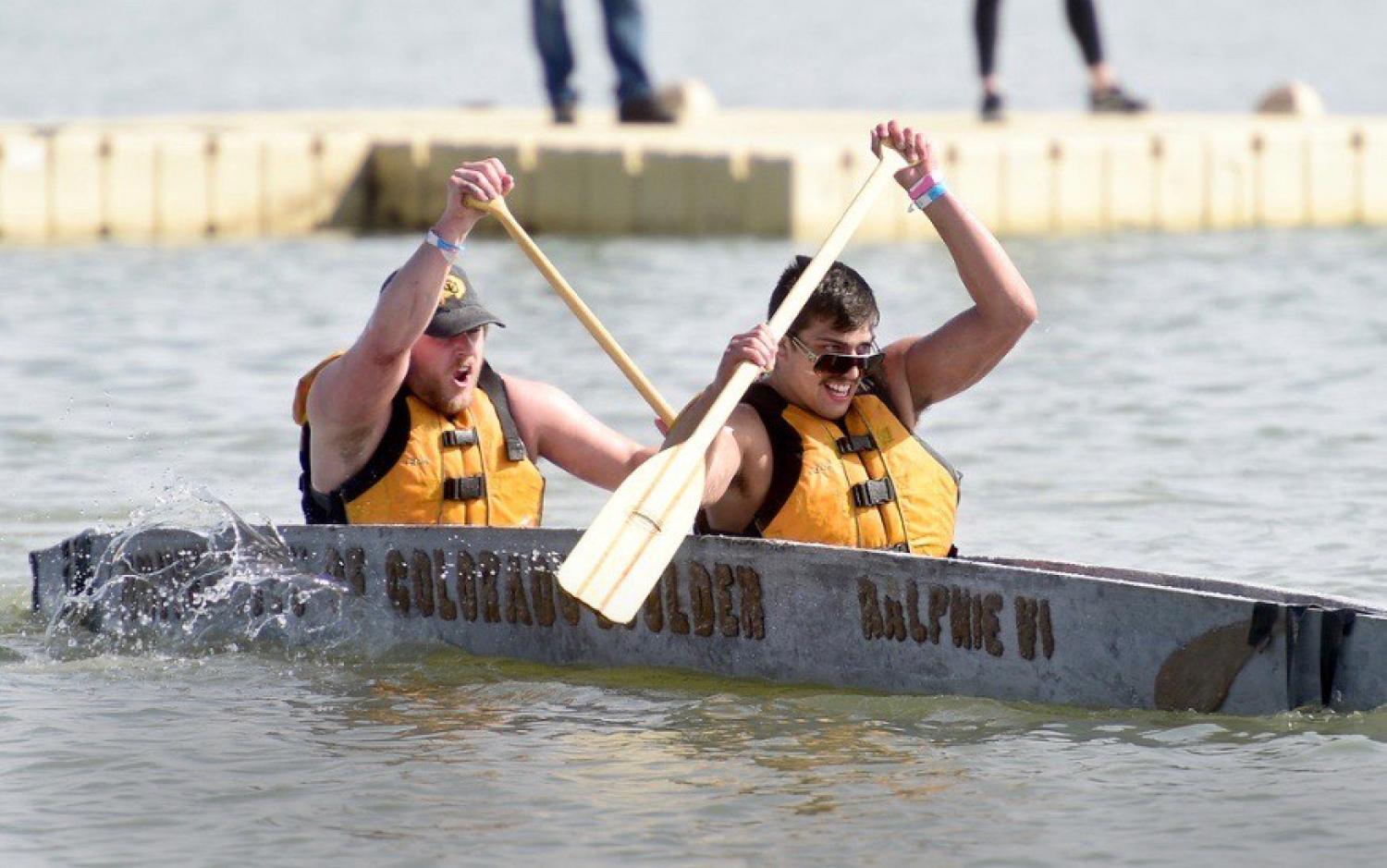Mixing Up The Concrete Field

To prepare for their upcoming competition, the Concrete Canoe Club team creates the perfect concrete mix and design
Anna Pyle | Photos by Anna Pyle
Every fall, the Concrete Canoe Club goes back to the drawing board. Over the course of a year, their focus is to design and compete for the title of having the best concrete canoe. The two-day competition, which takes place during the spring, attracts university students from all around the Rocky Mountain region as each team is judged on aesthetics, presentation, explanation of the concrete mixture, floatability, and race events. The combined score from the different criteria determines first place.
“It’s a really fun experience, super fun for the team. It really gets you passionate about civil engineering, that’s my favorite part about it,” Mason Bell, the former captain and junior in civil engineering, said. “The whole competition is set up to be creative and innovative.”
Established in 1920, the club is celebrating the 100th anniversary of the student chapter at Boulder as they aim to build a winning canoe. During the fall, students collaborate on new ideas and improve on previous designs. There are different components of the design process before the actual construction of the canoe; these include structural design of the canoe, the material mix design, and the hole design.
The entire semester is not solely focused on designing the canoe. At every meeting, a local company will come in and talk to the team about the civil engineering industry and potential job opportunities. The team also wants to show other students how fun and exciting their degree is. Last year, the team gave a project demonstration to seventh grade students to get them excited about civil engineering.
This upcoming competition is different from past years because the canoe team will compete alongside the surveying team, not with the steel bridge team. Previously, the two competing teams that made up the American Society of Civil Engineers (ASCE) were the Steel Bridge team and the Concrete Canoe team, but the Surveying team has now been added as the American Institute of Steel Construction (AISC) took over steel bridge. Although steel bridge is unofficially part of ASCE, they are still involved in the design of the steel table that teams use to support the construction and transportation of the canoe.
The mix design is all about understanding the materials, mix tables, and proportion tables according to the rules ASCE puts out each year for the competition. This includes choosing aggregates, fibers, binding materials, and reinforcement. They also have to figure out which additives are needed to create a light and strong mix design. The goal is to ensure that the canoe is less dense than water. During the competition, there is an event called the swamp test. The canoe is filled with water and tested to see if it resurfaces.
The hole design is developed through software frameworks such as AutoCAD, SolidWorks, or Civil 3D. It starts off with a simple box design and is then extruded and cut to whatever shape they want. “There are certain calculations we have to do on where the canoe slopes up, so you want your front end to be a little higher so it can catch the water and your back end can be a little bit lower,” Alec Guevara, the former hole design captain and junior in civil engineering, said. Once all the final adjustments are complete, cross-sections of it are printed. Then, large 8x8 blocks of styrofoam are cut and become the mold for the canoe. After they figure out the right mixture, they mix it by hand and mold it to the styrofoam.
“I enjoy most providing our students with opportunities to develop leadership and project management skills as well as exposure to hands-on laboratory activity,” Brad Wham, faculty advisor of ASCE, said. “These experiences can be challenging to generate in the classroom environment and are important to a well-rounded engineering education. We are excited this year to design and build a canoe transportation vehicle, grow our surveying team, and engage new members in all chapter activities.”
The team will showcase their hard work at the ASCE Rocky Mountain Regional Conference in April of 2020, where they will compete against universities from around the country at the Colorado School of Mines. The winner will go on to compete in the national competition.

